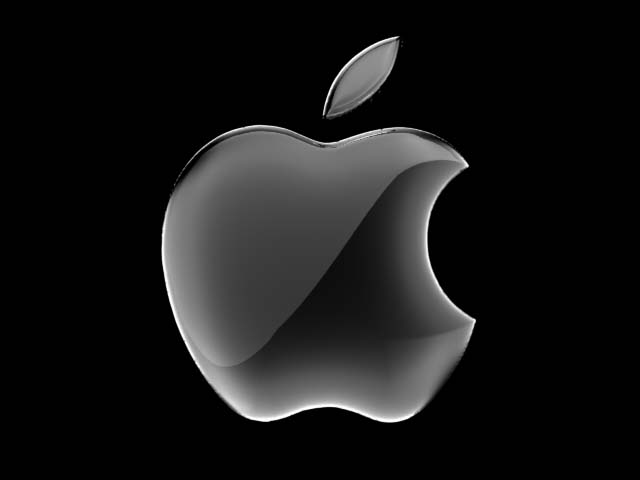News
 Microsoft is looking to pull off a reverse of the way Vista was killed. For those of you that remember Vista (and that should be most of you) you will know that Vista was pretty much dead before it hit the market due to several very negative statements that ended up running around the internet like crazy. It created a phenomenon that we call the repeated truth. What happened was that these statements were linked and sourced by so many blogs that even though some of the original writers had never even seen the OS it became “fact” that it was flawed. I am not saying that Vista did not have more than its fair share of problems but it was not all bad.
Microsoft is looking to pull off a reverse of the way Vista was killed. For those of you that remember Vista (and that should be most of you) you will know that Vista was pretty much dead before it hit the market due to several very negative statements that ended up running around the internet like crazy. It created a phenomenon that we call the repeated truth. What happened was that these statements were linked and sourced by so many blogs that even though some of the original writers had never even seen the OS it became “fact” that it was flawed. I am not saying that Vista did not have more than its fair share of problems but it was not all bad.
To combat this Microsoft has put a much more visible blog online called “Building Windows 8”. This blog has articles about some of the key features and improvements coming in Windows 8. We have already told you about the improved USB 3.0 stack and the accompanying power management layer. Now we are going to talk about improvements to file management system.
According to Microsoft moving, copying, renaming and deleting data accounts for 50% of the commands used by consumers. This data is really not a shock as it only makes sense when you think about the number of songs downloaded, digital images moved and e-mailed, pictures grabbed from sites like Grumpy Rabbit and others. Because they finally noticed this (and because the smaller and move portable tablets and ultra-thins will have limited space) the Windows 8 Engineers decided to revamp the way that files are manipulated. What they did was make your file management look more like the download manager in IE or FireFox with a few nice extras thrown in.

The basic view still looks like the typical copy or move window with the exception of the fact that as you add more files to the queue you do not get another window. Instead the new file shows up in the same window making it easier to monitor. The “More details” option has also gotten a face lift. Now when you click on this you get a real-time throughput graph of each pending job which is pretty cool.The last thing the Windows 8 team did was to revamp the copy and replace window. Instead of the boring single thumbnail you now get a complete listing of conflicts and the option to choose what you want to do with each.

This may seem like a little thing on the surface, but in terms of usability and user experience it is huge. I hope that the improvements keep coming and all are like this one.
Source Building Windows 8
Discuss this in our Forum
- Details
- By Sean Kalinich
- Hits: 2083
 In a shocking story Steve Jobs announced that he is resigning and will be replaced by Tim Cook (former COO (Chief Operating Officer). However, while Jobs is leaving the top job at Apple he will remain as Chairman for the company.
In a shocking story Steve Jobs announced that he is resigning and will be replaced by Tim Cook (former COO (Chief Operating Officer). However, while Jobs is leaving the top job at Apple he will remain as Chairman for the company.
Although this is surprising the writing has been on the wall for some time. Jobs has had more than his share of health concerns this last year and he even alluded to it in his resignation letter.
The announcement resulted in a 5% drop in stock when trading picked up after the announcement.The Apple board and staff praised Jobs saying that he has been the guiding force behind their rise to prominence in the tech market. During Jobs’ second reign as CEO he has helped create such iconic devices as the iPad, iPhone and even the whole iDevice Eco System. Critics have called him arrogant and short sighted in his hatred of Adobe’s Flash and in the way he sometimes pushes for products (and patents) that are often questionable.
Although he is staying on as chairman it is important to note that since Tim Cook has been running the company while Jobs is out on Medical Leave Apple has entered more lawsuits and found itself under the legal microscope for potential falsification of evidence.
- Details
- By Sean Kalinich
- Hits: 2474
 Apparently it has been something of a tradition for the Internet Explorer Team over at Microsoft to send a congratulatory pastry to FireFox with each new version they ship. However, now that Mozilla is pushing out a “new” release every six weeks the IE gang has shortened up on the size of the pastry. For their latest release MS sent over a small Cup Cake only. The running joke is that because of the smaller update the congratulatory gift is also smaller.
Apparently it has been something of a tradition for the Internet Explorer Team over at Microsoft to send a congratulatory pastry to FireFox with each new version they ship. However, now that Mozilla is pushing out a “new” release every six weeks the IE gang has shortened up on the size of the pastry. For their latest release MS sent over a small Cup Cake only. The running joke is that because of the smaller update the congratulatory gift is also smaller.
Mozilla’s new rapid release program is supposed to allow patches and fixes to get to market quicker without the normal delay of a major feature update. This decision by Mozilla has cause mixed feelings in the IT community and also the consumer market. Many feel that the short span is annoying and can be inconvenient. IE on the other hand is sticking with the larger full featured releases which, while some times better developed can also throw wrenches into web page performance and compatibility.
Honestly there really is no better way to do this, but I do wish that both companies would address some of the security and performance issues that are plaguing both browsers. FireFox needs to fix the Flash bug that it has while MS really needs to work on securing the way that Plug-in interact with it (especially allowing elevated privileges).
Still it is sort of funny to find out that the IE team sends over a (cup)cake every time a new version of FireFox ships.
Source CNET
Discuss in our Forum
- Details
- By Sean Kalinich
- Hits: 5822
 It looks like the Death of the WebOS might be a big benefit to Microsoft and their Windows Phone 7 mobile operating system. After HP announced that they were killing this part of their business model off (along with their most of their Consumer Product division) many developers that were working on WebOS projects had nowhere to turn to and were probably a tad annoyed that they had invested in this technology and now were being left out in the cold.
It looks like the Death of the WebOS might be a big benefit to Microsoft and their Windows Phone 7 mobile operating system. After HP announced that they were killing this part of their business model off (along with their most of their Consumer Product division) many developers that were working on WebOS projects had nowhere to turn to and were probably a tad annoyed that they had invested in this technology and now were being left out in the cold.
Microsoft was right there though letting former WebOS developers know that if they were interested all they had to do was contact Microsoft and they would provide them with all of the Tools needed (Development Kits, Phones, and even training) to get things going under the Windows Phone banner. This was a smart move as, if the reports are to be believed, Microsoft is claiming that over 500 developers have contacted them.
We think that these rumors are more than likely true as many of these developers will want to offset their losses with some free help even if it is from Microsoft.
Discuss this in our Forum
- Details
- By Sean Kalinich
- Hits: 2460
 We have heard all kinds of rumors and rumblings about Windows 8. So far we have heard all about how it is much more tablet friendly, designed to work with ARM CPUs and that it will be the best user experience that MS has done yet. We have had a look at a few of the demos (not any of the Betas yet though) and can say that it looks interesting, but I am not sure how it will work as an OS. As Windows Vista showed, just having a nice looking UI means nothing if you cannot back it up with performance.
We have heard all kinds of rumors and rumblings about Windows 8. So far we have heard all about how it is much more tablet friendly, designed to work with ARM CPUs and that it will be the best user experience that MS has done yet. We have had a look at a few of the demos (not any of the Betas yet though) and can say that it looks interesting, but I am not sure how it will work as an OS. As Windows Vista showed, just having a nice looking UI means nothing if you cannot back it up with performance.
Fortunately it seems that Microsoft is looking into that. They are talking about making their USB 3.0 stacks more efficient while changing the power profiles to help make battery life a little longer. Microsoft is citing an increase in USB 3.0 devices on the market and user demand for these peripherals as the reason they are working on this. If their claims are true then you might actually see something close to the speeds we were promised from USB 3.0. Personally, I would like them to fix the networking and disk drive stacks first before they worry about peripherals, but that is just me. Still Microsoft is trying I guess, and to make sure their customers know the hard work they have put in they have developed a USB Test Tool called MUTT (Microsoft USB Test Tool). This is designed to show you that USB 3.0 is working. So if you get different results, hey the tool works properly so it must be you right… Be sure to check out the video at the source link.
Source MSDN
Discuss in our Forum
- Details
- By Sean Kalinich
- Hits: 2225
More Articles …
Page 560 of 570



